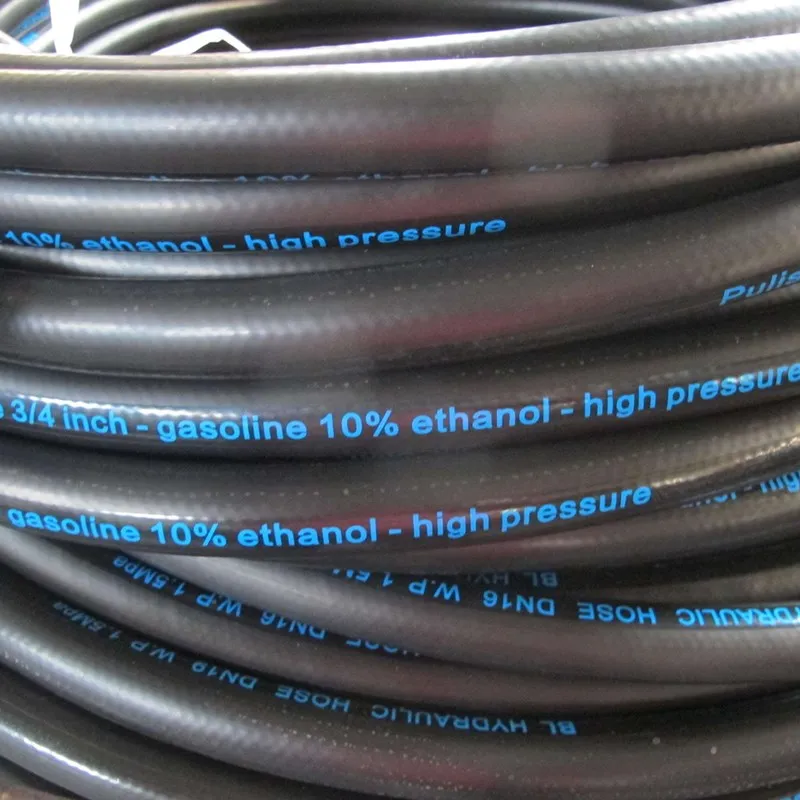335345435
Dec . 03, 2024 16:23 Back to list
High-Pressure Cleaner Hose for Effective and Efficient Outdoor Cleaning Tasks
Understanding High Pressure Cleaner Hoses A Comprehensive Guide
High pressure cleaners, also known as pressure washers, are essential tools for maintaining cleanliness in various settings, from residential areas to commercial spaces. One of the most crucial components of these machines is the pressure cleaner hose. This article will delve into the significance, types, features, and maintenance of high pressure cleaner hoses to help you make an informed choice when selecting one for your pressure washing needs.
The Importance of High Pressure Cleaner Hoses
The high pressure cleaner hose is a key element in a pressure washing system, designed to convey water at high pressure from the machine to the cleaning surface. This hose allows you to effectively clean a variety of surfaces - concrete driveways, wooden decks, walls, vehicles, and even outdoor furniture. The capability of the hose to handle high-pressure water flow is vital; it ensures that the pressure remains consistent while minimizing the risk of leaks or ruptures.
Types of High Pressure Cleaner Hoses
Not all high pressure cleaner hoses are created equal. They come in various types, each tailored for different applications and cleaning tasks
1. Rubber Hoses Durable and flexible, rubber hoses are known for their longevity and resistance to abrasion. They perform well in high temperature and high-pressure environments.
2. PVC Hoses Lightweight and easy to maneuver, PVC hoses are often a more affordable option. However, they may not handle high pressures and temperatures as well as rubber hoses, making them suitable for lighter cleaning tasks.
3. Reinforced Hoses These hoses have an additional layer of reinforcement, making them less likely to kink or burst under pressure. They are ideal for professional-grade pressure washers used for tough cleaning tasks.
4. Hybrid Hoses Combining the best features of rubber and PVC, hybrid hoses offer flexibility, durability, and resistance to extreme temperatures. They are gaining popularity for both residential and commercial use.
Features to Consider
When selecting a high pressure cleaner hose, several features should be taken into account
high pressure cleaner hose

1. Length Hoses come in various lengths, typically ranging from 25 to 100 feet. A longer hose can increase your working range without having to constantly move the pressure washer.
2. Diameter The diameter of the hose affects the water flow rate. A thicker hose usually allows for a higher flow rate, which can improve cleaning efficiency.
3. Pressure Rating Ensure that the hose is rated for the pressure output of your pressure washer. Using a hose with an insufficient pressure rating can lead to leaks or bursts, posing safety risks.
4. Temperature Rating Consider the temperature of the water being used. Some hoses are specifically rated for hot water usage, which is essential for effectively cleaning oil and grease.
Maintenance Tips
Proper maintenance of your high pressure cleaner hose can significantly extend its lifespan
1. Inspect Regularly Check for any signs of wear and tear, such as cracks, kinks, or leaks. Addressing these issues early can prevent further damage.
2. Clean After Use Rinse the hose with clean water after use to remove any detergent or debris that may clog the nozzle.
3. Store Properly Avoid coiling the hose tightly or leaving it exposed to extreme temperatures. Store it in a cool, dry place to prevent deterioration.
4. Avoid Overstretching Be cautious not to overstretch the hose while in use, as this can result in damage.
Conclusion
The high pressure cleaner hose is an indispensable part of the pressure washing equation. By understanding the types, features, and maintenance practices associated with these hoses, you can enhance your cleaning efficiency and ensure the longevity of your pressure washing equipment. Whether you're a homeowner looking to maintain your property or a professional cleaner tackling tough jobs, choosing the right high pressure cleaner hose is paramount for achieving impressive results.
-
SAE 100 R17 Black Smooth Cover Hydraulic Hose
NewsMar.07,2025
-
SAE 100 R17 Black Smooth Cover Hydraulic Hose
NewsMar.07,2025
-
SAE 100 R17 Black Smooth Cover Hydraulic Hose
NewsMar.07,2025
-
SAE 100 R17 Black Smooth Cover Hydraulic Hose
NewsMar.07,2025
-
SAE 100 R17 Black Smooth Cover Hydraulic Hose
NewsMar.07,2025
-
steel wire braided hydraulic hose
NewsMar.07,2025



